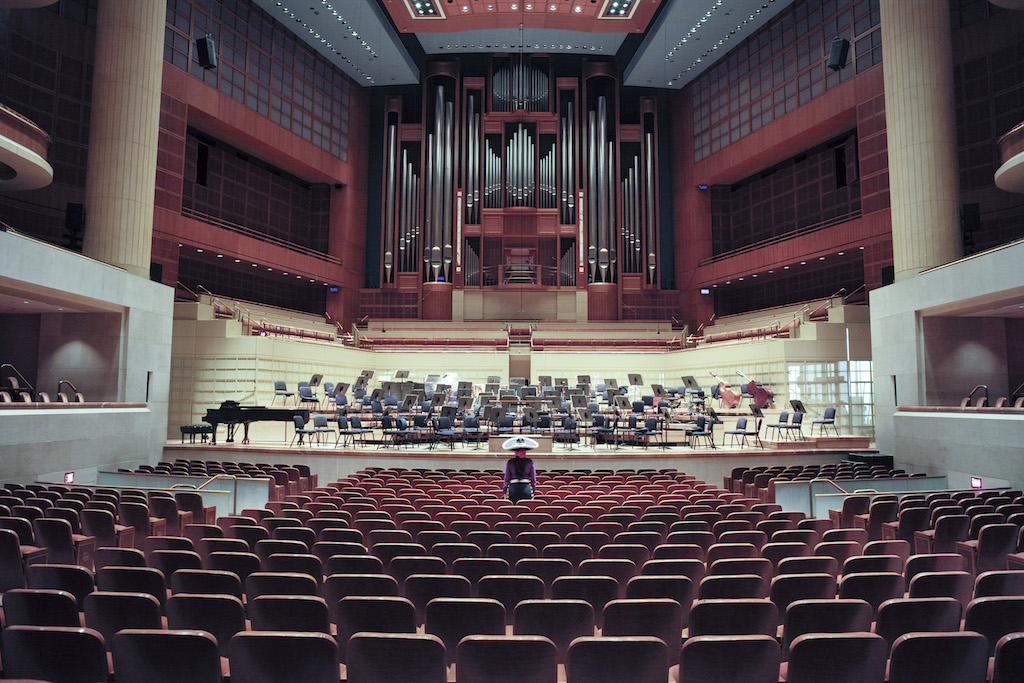[ad_1]

Gonzalo Lebrija, Mariachi Wagner, 2018, performance still.
COURTESY THE ARTIST
Although he is often credited with having created some of the most important operas of all time, the 19th-century German composer Richard Wagner remains a controversial figure because of the racist ideology he espoused. In his 1850 essay “Das Judenthum in der Musik” (“Judaism in Music”), Wagner wrote that Jews around the world, notably the composers Felix Mendelssohn and Giacomo Meyerbeer, lacked true artistic ability. “Mendelssohn has shown us that a Jew can have the richest abundance of talents and be a man of the broadest culture,” Wagner wrote, “but still be incapable of supplying the profound, heart-seizing, soul-searching experience we expect from art.”
Wagner’s concurrent musical genius and anti-Semitism intrigued artist Gonzalo Lebrija, who has adored the composer’s work since childhood, when his grandfather introduced him to the classical genre. “Even though I always admired his music, he’s very disappointing,” Lebrija said. Lebrija’s work often examines the contrariety contained by a moment, a tradition, or, in the case of his upcoming piece, Mariachi Wagner, a person. For the piece, Lebrija will have an all-women mariachi group play Wagner’s music—a project that, in the artist’s estimation, is “elegant and, at the same time, very ironic.”
“Imagine Wagner wakes up from the grave and learns that this mariachi band made up entirely of women is playing his work,” the artist told ARTnews. “I think he would die immediately, [go] right back to the grave.”
Mariachi Wagner is set to debut this month at the Moody Performance Hall as part of the three-week-long Soluna International Music & Arts Festival in Dallas, alongside performances by Nas and the Dallas Symphony Orchestra. (Events are held around the Texan city, at such venues as the Dallas Museum of Art, the Nasher Sculpture Center, and the Bomb Factory.) Lebrija’s show will consist of an hour-long set by Dallas’s only all-women mariachi group, the Mariachi Rosas Divinas, though they won’t be playing any of their usual lively jams. The artist has collaborated with composer Jesús Echevarría to translate Wagner’s music—which was originally written with booming trumpets and thudding pianos in mind—for mariachi instruments; the Rosas Divinas will debut nine compositions.
“They’re fantastic musicians,” Lebrija said of the group, speaking to ARTnews on the phone from Guadalajara, Mexico, where he is based, four weeks before the work’s premiere. “Not all mariachi bands can do this exercise and interpret Wagner. It’s very complicated.” But the band, whose members are all American descendants of Mexican parents, have channeled their love for their heritage into repurposing Wagner’s legacy with accuracy and the added soul of their own genre.
Lebrija’s past work has explored the power of ignorance in shaping perception. For the 2002 video Aranjuez, the artist filmed joyous World Cup soccer fans as they herded together in a celebratory mosh pit. In an examination of the psychological impact of groupthink, the artist zooms in to focus on a woman in anguish after being trampled as she tried to navigate through the same crowd that, moments earlier, seemed innocently merry. His 2012 print Trou Noir shows a noble cowboy atop a white bucking horse in the midst of a lasso—here, he is commenting on what he calls “vacuous heroism and disregard for life” that is perpetuated by the continuance of bullfighting or lassoing animals for sport. Without context, Lebrija’s works exist only as beautiful objects, images, or performances. With a little introspection on the part of their viewers, however, they become evidence of dark events.
With only weeks left before the work’s first showing, Lebrija remained uncertain of some of Mariachi Wagner’s visual components. He’d planned to create a minimal concrete structure reminiscent of the U.S.-Mexico border wall, atop which the Mariachi Rosas Divinas would stand in their baroque traditional garb—a long-sleeved, button-down shirt and black pants with metal decals affixed along the sides of the legs—as they played. Because of venue limitations, however, he couldn’t guarantee the wall would come to fruition. Yet the potential setback hasn’t deterred Lebrija. “The most important thing about this project is the music, not the visuals,” he said.
Lebrija hopes to provide subtle context as to what mariachi music means to Mexican people, with lighting that will simulate an evening’s darkness gradually brightening to dawn over the course of the performance. “Mariachi is about singing night until the sunrise,” the artist said. And the songs, despite their upbeat, celebratory sound, traditionally deal with heartbreak. “Mariachi songs are always loud—they’re about passion and crying. It’s liberation. And I think playing Wagner with the idea of a broken heart, it’s a different [musical] language. It’s not Wagner anymore.”
While the performance carries innate political undertones, Lebrija said he doesn’t create art with any particular agenda—he just hopes his work affects his viewers. “[My art] never talks about what you should think. I know something is wrong, and I know how to talk about it [artistically] and how to make you feel about it,” he said. “It’s very difficult to express [social issues], and to create a sensibility to understand them better and give people the opportunity to open, but I think this is what artists do. Artists are not politicians. In a way, they are activists, but their activism is [done] in terms of how they open other people’s minds to conceptual ideas.”
[ad_2]
Source link

